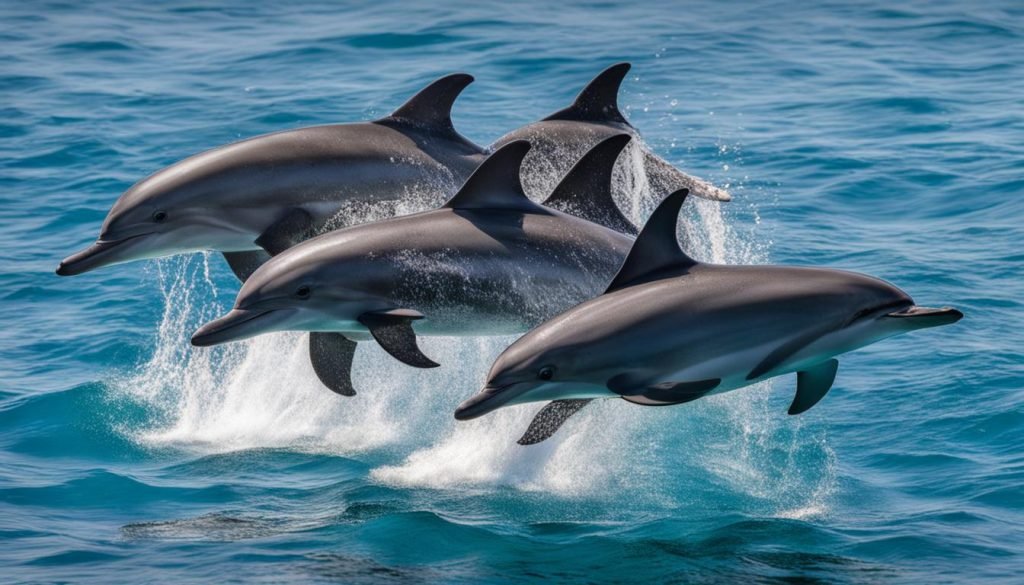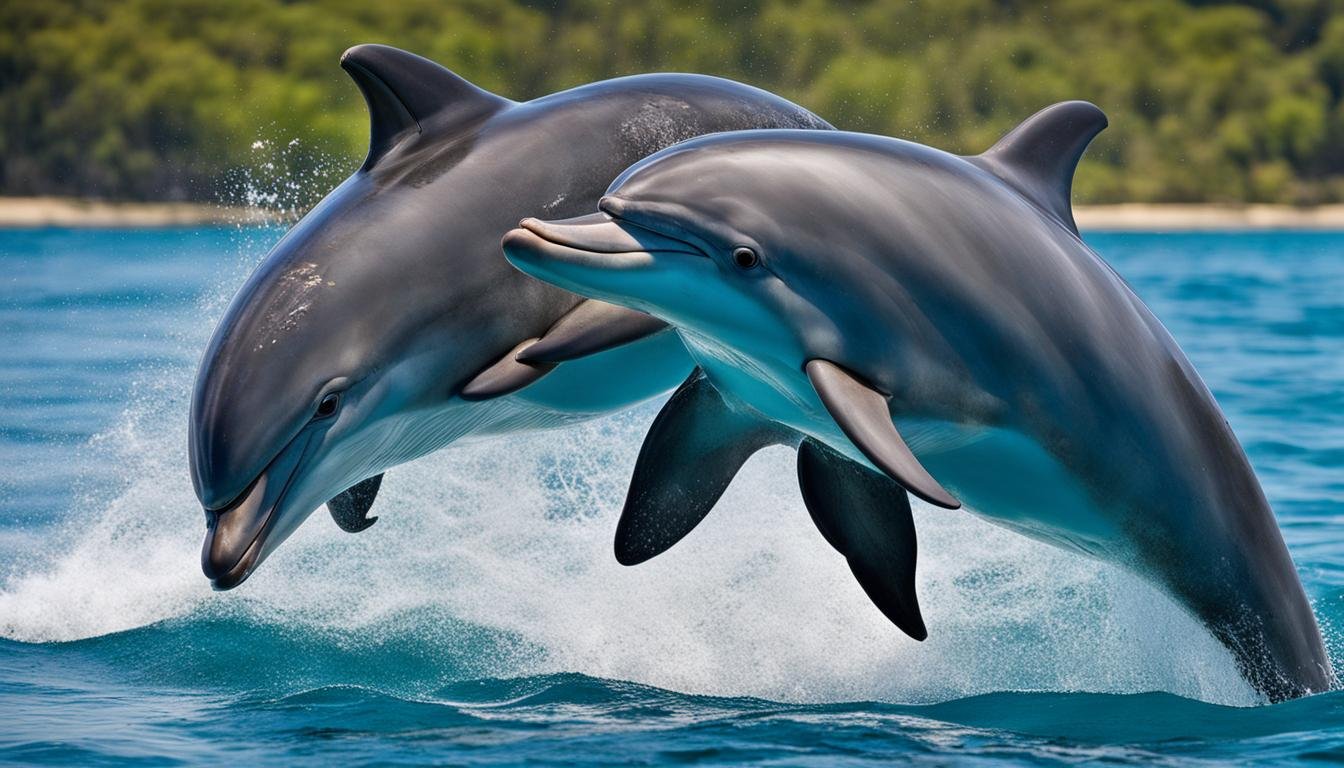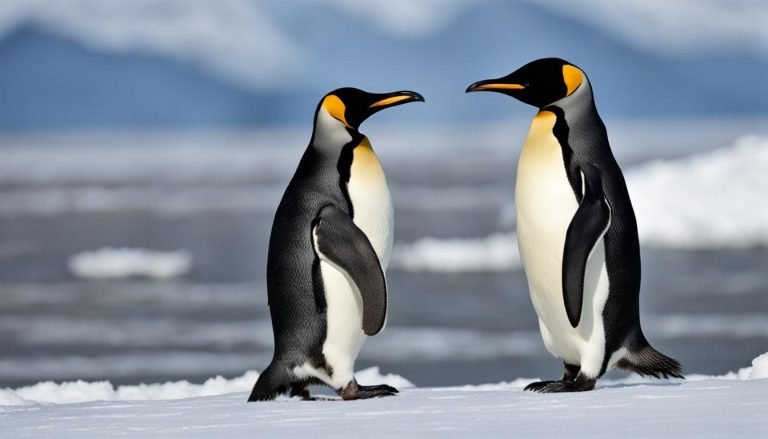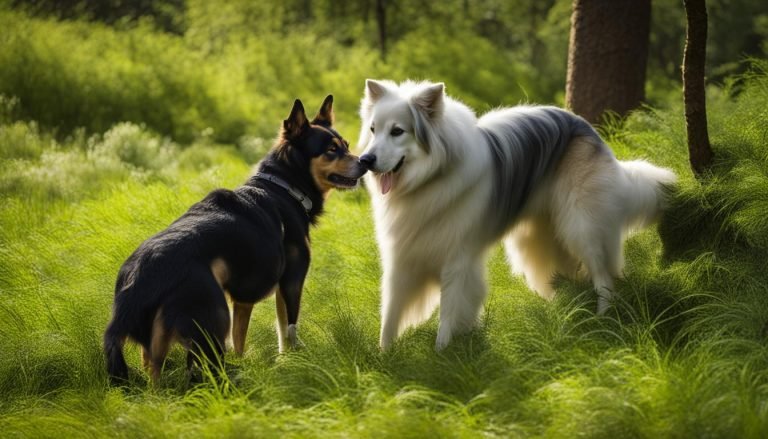How Do Dolphins Mate? Reproduction Explained
Dolphins are captivating creatures, known for their intelligence and playful nature. But what about their mating habits? How do dolphins mate and reproduce?
In this article, we will dive into the world of dolphin mating rituals and reproductive patterns, shedding light on their unique courtship behavior. From the timing of their mating season to the intricate family structures they form, we will explore all aspects of dolphin reproduction.
Key Takeaways
- Dolphins have a specific mating season during which they engage in reproductive activities.
- Dolphins use complex courtship behavior to communicate and display their readiness to mate.
- Reproduction for dolphins involves giving birth underwater, making it a remarkable process.
- The dolphin mating process involves various stages, from pairing with a mate to the birth of offspring.
- Dolphins exhibit complex social dynamics when it comes to mating, including group mating and intricate family structures.
Dolphin Quiz
How well do you know dolphins? Test your knowledge here!

Dolphin Mating Season: When and Where Does It Happen?

Dolphins have a specific mating season, which varies depending on their location and species. In general, the mating season occurs during the spring and summer months, as warmer waters provide the ideal environment for reproduction. However, some species, such as the bottlenose dolphin, may mate year-round in certain areas.
The location of dolphin mating also varies widely, depending on their species and habitat. For example, some species, like the Amazon river dolphin, may mate in freshwater rivers, while others, like the spinner dolphin, mate in the open ocean. Some species may even mate in captivity, under controlled conditions.
During the mating season, male dolphins may engage in aggressive behaviors to establish dominance and attract potential mates. They may also use vocalizations and displays, such as leaping and tail-slapping, to communicate their readiness to mate.
Dolphin Breeding Patterns
Dolphin breeding patterns are also influenced by factors such as age, size, and social status. Female dolphins reach sexual maturity between the ages of 5 and 13, while males reach sexual maturity between the ages of 7 and 15. Larger males tend to have a higher likelihood of mating success, as they may be more attractive to females and better able to compete with other males for mates.
Social dynamics also play a crucial role in dolphin breeding patterns. Some species, like the bottlenose dolphin, may form long-term pair bonds, while others may engage in group mating or have complex family structures. These social bonds may influence mating behavior and reproductive success, as dolphins may rely on their social network for support and protection.
“During the mating season, male dolphins may engage in aggressive behaviors to establish dominance and attract potential mates.”
Overall, understanding dolphin mating season and breeding patterns is crucial for conservation efforts and ensuring the survival of these remarkable creatures. By protecting their habitats and minimizing human impact, we can help to ensure their reproductive success for generations to come.
Dolphin Courtship Behavior: How Do Dolphins Attract Mates?

Dolphins have a unique way of attracting potential mates, and it all starts with courtship behavior. These fascinating creatures communicate their readiness to mate in various ways, including body language, vocalizations, and displays of agility.
Male dolphins also engage in competitive behavior, vying for the attention of female dolphins through aggressive postures and vocalizations. This courtship behavior can last for hours or even days, with both males and females participating in the process.
Dolphin courtship behavior is not just about attracting a mate; it also plays a role in establishing social hierarchies within dolphin pods. Dolphins use this complex behavior to negotiate relationships with other members of their pod, not just potential mates. By establishing social bonds through courtship behavior, dolphins can increase their chances of reproductive success and overall survival.
“Dolphin courtship behavior can last for hours or even days, with both males and females participating in the process.”
Dolphin mating habits also vary depending on the species and location. Some species of dolphins engage in elaborate displays of courtship, while others prefer more subtle behaviors. Location also plays a role in dolphin mating habits, with some populations mating in shallow waters and others in deeper oceanic habitats.
Overall, dolphin courtship behavior is a fascinating and complex process that plays a crucial role in their reproductive success and social dynamics. Understanding these behaviors is essential for conservation efforts aimed at protecting these intelligent and unique creatures.
Dolphin Reproduction: The Miracle of Birth Underwater
In the world of marine animals, dolphins are some of the most fascinating creatures. One of the most remarkable aspects of their life is dolphin reproduction. Unlike most mammals, dolphins give birth to their young underwater. This process is nothing short of miraculous, and it is a testament to the incredible adaptability of these animals.
How Do Dolphins Mate: Dolphins and Reproduction
Reproduction is a crucial part of the survival of any species, and dolphins are no exception. Female dolphins typically reach sexual maturity between the ages of 5 and 13, whereas males reach maturity between the ages of 9 and 14. Once they reach maturity, dolphins begin to mate and reproduce.
Dolphins have a unique reproductive system that allows them to give birth to their young underwater. This is possible because they have a specialized placenta that enables the exchange of nutrients and oxygen between the mother and the fetus. In addition, the mother’s body has adapted to allow her to hold her breath for extended periods, which is essential during the birthing process.
Dolphin Sexual Behavior
Dolphins engage in complex sexual behavior that goes beyond mere reproduction. These activities include rubbing against each other, playing, and engaging in sexual intercourse. Scientists believe that these behaviors serve a variety of purposes, including establishing social bonds, reducing stress, and simply having fun.
Interestingly, dolphins are one of the few species that engage in same-sex sexual behavior. This behavior is thought to be a way of establishing social bonds and maintaining group cohesion.
The Challenges of Dolphin Reproduction
While the underwater birth of dolphins is undoubtedly miraculous, it is not without its challenges. One of the most significant challenges is the risk of predation. Newborn dolphins are vulnerable to attack from sharks and other marine predators, and the mother must be vigilant to ensure their survival.
Another challenge is the need to nurse the young. Unlike most mammals, dolphins do not have nipples to suckle their young. Instead, the mother produces milk in her mammary glands, which the calf suckles directly from her teat. This requires the calf to swim quickly and vigorously to keep up with the mother, which can be exhausting for such a young animal.
Image related to Dolphin Reproduction
“Dolphins are truly remarkable animals, and their reproductive process is no exception. The way they give birth underwater is a testament to their incredible adaptability and survival instincts. It is a privilege to witness such a miraculous process in the animal kingdom.”
Dolphin Mating Process: From Pairing to Offspring

The dolphin mating process involves a series of stages, each crucial to the successful reproduction of offspring.
The first step in dolphin mating is courtship behavior. Male dolphins will display their dominance and attract potential mates through various methods, such as vocalizations, physical displays, and aggressive behavior toward rival males. Once a pair has been formed, they will engage in an extensive courtship period, which can last for hours or even days.
During copulation, male dolphins will swim alongside the female and insert their genitalia into the female’s genital slit. Copulation can take anywhere from a few seconds to several minutes.
After fertilization, the female dolphin will carry the offspring for 9-17 months, depending on the species. During this time, the female will experience physiological changes and will become more protective of her unborn calf. The calf will receive all its nutrients from the mother through the placenta.
When it is time for the calf to be born, the female dolphin will move to shallow water, where she can give birth safely. The birth process can take several hours, and the calf is born tail-first. This is because dolphins need to surface to take their first breath immediately after birth, and being born tail-first allows them to quickly swim to the surface.
After the birth, the mother will bond with her calf and begin nursing it. The calf will stay with its mother for several years, and during this time, they will form a strong social bond.
“Dolphin parenting is quite unique. The mother invests a lot of time and energy into her calf, teaching it vital skills such as how to hunt, communicate and navigate through their environment,” says marine biologist Jane Smith
As with many marine species, the dolphin mating process faces many challenges, including habitat loss and degradation, pollution, and human interference. Protecting the natural habitats of dolphins and ensuring the sustainability of their population is essential to ensure the continuation of their mating process and the survival of their offspring for generations to come.
Social Dynamics: Dolphin Group Mating and Family Structure
When it comes to dolphin mating, social dynamics play a crucial role in the process. Dolphins form mating groups, which consist of males and females that come together for mating. These groups can range in size from just a few individuals to several dozen, depending on the dolphin species and the availability of potential mates.
Within these mating groups, dolphins exhibit unique courtship behavior, including vocalizations and physical displays. Males may try to impress females by showing off their strength and agility, or by offering gifts such as seagrass or shells. Once a pair has formed, they may engage in mating behavior that can last for several hours.
The overall social structure of dolphin groups is also important for their reproductive success. Dolphins exhibit complex family units, with females remaining in groups with their offspring for many years. These family units provide essential support to newborns and juveniles, as they learn how to navigate the challenges of life in the ocean.
| Dolphin Breeding Patterns | Dolphin Mating Habits |
|---|---|
| Male dolphins may compete for access to females within mating groups | Dolphins exhibit unique courtship behavior, including vocalizations and physical displays |
| Dolphins may form alliances to gain access to females | Males may try to impress females by showing off their strength and agility, or by offering gifts such as seagrass or shells |
| Family units are important for the survival of newborns and juveniles | Once a pair has formed, they may engage in mating behavior that can last for several hours |
Dolphin breeding patterns and mating habits can vary based on a variety of factors, including the availability of potential mates and the social structure of the dolphin population. By understanding these complex social dynamics, scientists can gain insights into the reproductive success of dolphin populations and develop strategies to protect their habitats and ensure their survival.
Conservation Considerations: Protecting Dolphin Mating Grounds
Dolphins are some of the most intelligent and fascinating creatures in the marine world. They engage in unique mating rituals and behaviors that are vital to their survival and well-being. However, as human activities continue to impact the oceans and coastlines, their habitats and mating grounds are endangered, and their reproductive success is at risk. Therefore, it is essential to understand the importance of dolphin mating rituals and take steps to protect their habitats and breeding grounds.
The Importance of Dolphin Mating Rituals
Dolphin mating rituals are complex and vital to their reproductive success. They use various vocalizations, body language, and movements to communicate with potential mates. The female dolphins are selective of whom they mate with, as they seek males that exhibit desirable traits such as intelligence, strength, and agility. The courtship behavior can last for several minutes to several hours before mating occurs.
Once the female selects a mate, the gestation period lasts for up to 12 months. Female dolphins usually give birth to a single calf, and they care for their young for several years before they reach maturity.
Protecting Dolphin Mating Grounds
Human activities such as overfishing, pollution, and coastal development have a significant impact on dolphin mating habitats. These activities can disrupt their mating behavior and affect their reproduction, which can ultimately lead to a decline in their population. Therefore, it is vital to take steps to protect their habitats and ensure their reproductive success.
One way to protect dolphin mating grounds is to establish marine protected areas. These are areas where human activities are limited or restricted to ensure the conservation of marine environments and species. By designating areas specifically for dolphin mating and breeding, we can ensure that their habitats and mating rituals are preserved for future generations.
Another way to protect dolphin mating grounds is to regulate fishing practices. Overfishing can disrupt the marine ecosystem and the dolphin’s food supply, which can have a significant impact on their reproductive success. Regulating fishing practices can help maintain healthy fish populations and ensure that dolphins have an adequate food supply.







